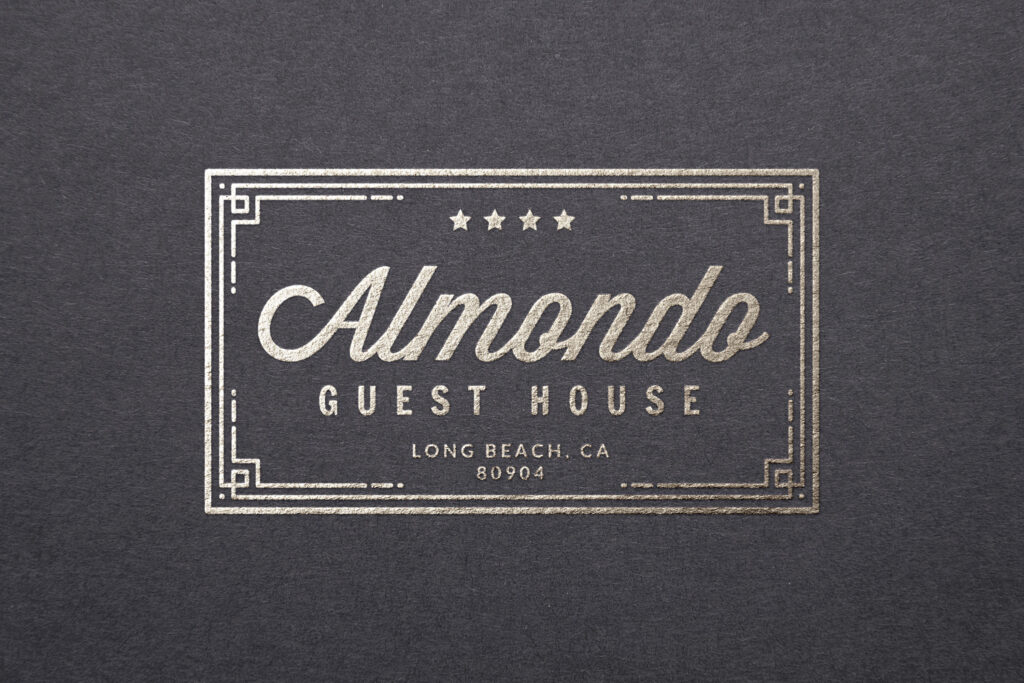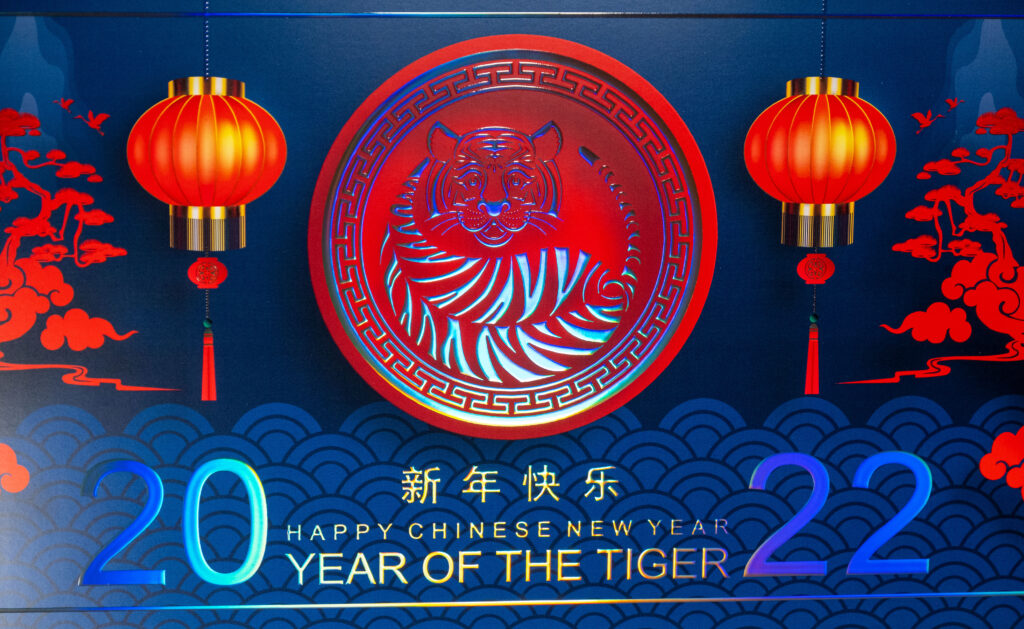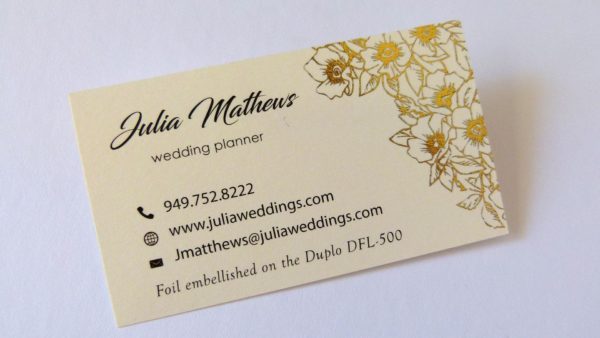It is tempting to think that because hot and cold applications are foil techniques, they are similar. But there are differences to the way you prepare and execute the project that go beyond heat.
The “quick and dirty” difference between the two processes is that hot foil stamping is the traditional process that many think of when they consider foiling. It involves creating a die and running the project through a separate piece of equipment that uses a combination of heat and pressure to lay down actual foil sheets in the areas where it is desired. While it creates a clean, luxurious finish, it is also time and labor intensive, which is why it was typically reserved for luxury brands. It also tends to have a shinier, more durable finish. This is another reason it’s often used for applications such as packaging that not only have to stand out on a shelf, but also have to stand up to everything they can throw at the box and still look great.

Cold foil is the process of printing the foil effect onto the project directly in-line with the inks. It uses a UV process to adhere the foil sheets to the appropriate locations and often can be printed on for even further customization. It is faster and less expensive to produce, opening up the effect to more brands and applications. The finished result will have a shiny finish, but may not be as intense as with a hot foil application. Metallic, holographic, and matte foils can be used.

To add to the conversation, there is also the process referred as “sleeking” or “digital foiling” or even “toner foiling”. Working in tandem with digital presses, sleeking devices utilize heated rollers and toner-reactive foil to fuse the foil with the printed toner. Additional passes are required to print remaining artwork in CMYK or to apply multiple foil colors. Certain devices can also apply the toner over spot UV for a raised foil effect. No stamping dies are required and it’s the most budget-friendly option.

Choosing Between Hot and Cold Foil
There are many factors to consider when choosing which foil option is right for a specific application, which in turn can impact how you go about setting up the file. For example, will you need to create plates and dies or just a spot layer file? Knowing where they each excel is critical to choosing the right one for each application.
- The colors. Hot foil is generally laid down one color at a time, so if a designer wants different colors in different areas, they need to account for that time and effort. The entire setup will have to be reproduced for each color and the application will need to be run through the equipment multiple times — once for each foil color. This is why typical hot foil applications only use one color, and most often that is silver or gold, with the rest of the print around the foil providing any additional color pops. Cold foil, on the other hand, can have inks laid directly on top of it to create any color a press can achieve, just in a metallic foil finish. Multiple passes may also be required if using multiple foil colors. It opens the door for designers to get more creative with how they think about the effects and how to get the most impact, or even opens the door to creating different versions of a project using varying colors for regions, SKUs, etc. without needing to re-create each one manually.
- The design. When it comes to hot foil, simpler is better. Because you are using an electroplating process to adhere a stamped design onto a sheet, sometimes the finer details can get lost or will pull up on the transfer. To keep it looking clean, you’ll want to stick with simpler, bolder foil designs. Cold foil uses the same type of printing process the inks are going through and then lay the foil on top, allowing you to get the same level of intricate detail in the foil that you would in a standard print. If you want a more complex foil design, cold foil is the way to go.
- The coverage. You also need to consider not just how intricate the design is, but how big it is. A smaller overall area of foil might be more cost effective to do hot, as it is a more efficient process. On the other hand, if the application has full foil coverage, or even a moderate amount of coverage across the entire surface, cold foil might be a better choice.
- The effects. If foil is the only embellishment the application has, then cold foil will excel in producing eye-catching results. But if you want to have additional effects on the surface — other than additional colors — such as embossing to create a more tactile feel, you’ll want to go with a hot foil application.
- The cost. Of course, hot foil tends to be on the more expensive side, and it can add up fast when you start to calculate the cost of the dies needed — you’ll need one for every color or design change for a project. That said, just as with the offset vs. digital debate, hot foil is still going to be more economical for longer run lengths at the end of the day, with some equipment capable of producing as many as 4,000 sheets per hour. Cold foil, however, excels at short, and even variable, runs, and it doesn’t require any dies, just setting it up as a channel in the print file before it is sent to press. Depending on the speed of the press and how long the specific foil adhesive you’re using takes to dry along the way, you can get anywhere from a few dozen sheets per hour, to hundreds or thousands. Cold foil in this regard is going to be more versatile, if slower for large projects.
So, which one is right for your customer base and the applications they produce? It will really vary from customer to customer, and job to job, which is why many shops that offer foil effects do ensure they have both options to choose from. Foil — whether hot or cold — can add an incredible amount of value to any type of printed material, making it worth it to be competent in both types. No matter what walks through your doors, you can find ways to improve it with foil.

TONI McQUILKEN
Guest Blogger
NAPCO Media



